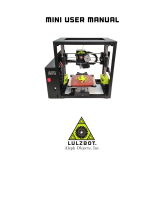
VLT
®
5000 Series
$
MN.50.T1.02 - VLT is a registered Danfoss trademark
■ VLT 5000 Control principle
After automatic motor adaptation, VVC
plus
will help
to ensure extremely accurate motor control.
Advantages of the VVC
plus
control system:
· Accurate speed control, now even at low
speed.
· Quick response from received signal to full
motor shaft torque.
· Good compensation for step loads.
· Controlled transition from normal operation to
current limit operation (and vice versa).
· Reliable torque protection throughout the speed
range, also in the field weakening range.
· High tolerance towards varying motor data.
· Extruder screw protection by limiting the shaft
torque.
· Full holding torque (closed loop)
As standard, VLT 5000 Series comes with a number
of integral components that would normally have to
be acquired separately. These integral components
(RFI filter, DC coils, screen clamps and serial
communication port) are space-savers that
simplifying installation, since VLT 5000 Series fulfils
most requirements without any supplementary
components.
An extruder application with VLT 5000 encoder
feedback has the following speed accuracy:
Frequency range: 0 - 1000 Hz
Resolution on output frequency: ±0.003 Hz
Speed accuracy (closed loop): < 1500 rpm: max
deviation ±1.5 rpm
First and foremost, the current and the motor
model calculations are very good. The current is
split into magnetising and torque-generating parts
and provides for accurate and quick estimation of
the actual motor loads. It is thus possible to
compensate for rapid load changes. Full torque as
well as extremely accurate speed control can be
obtained at low speeds or even at standstill.
Good torque control properties, smooth transitions
to and from current limit operation and robust pull-
out torque protection are ensured.
The VLT 5000 Series features an inverter control
system called VVC
plus
.
VVC
plus
controls an induction motor by energizing it
with a variable frequency and a voltage to match it.
If the motor load is changed, the magnetisation of
the motor changes too, and so does its speed.
Consequently, the motor current is measured
continuously and the actual voltage requirements of
the motor are calculated from a motor model.
Motor frequency and voltage are adjusted to
ensure that the motor performance remains best
possible under varying conditions.
With the VVC
plus
the regulation is robust and tolerant
to different motor characteristic and motor derating
is not necessary.













